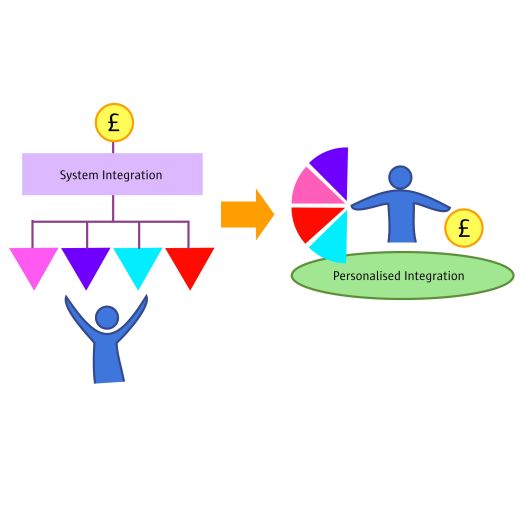Only a model which examines the value and role of integration from the perspective of the citizen will begin to bring some much needed clarity into the current system.
Author: Simon Duffy
Local public services are constantly being separated, joined, separated and rejoined by central government. The process is damaging and futile. Only a model which examines the value and role of integration from the perspective of the citizen will begin to bring some much needed clarity into the current system.
Integration of public services has been the Holy Grail for government in recent years. But, just as the Grail could not be acquired by any ordinary knight, so integration cannot be achieved by traditional administrative means. Attempts to organise our way to integration (through restructuring, or sophisticated forms of coordination and planning) will continue to frustrate the aspirations of their architects. For at bottom any organisational structure (quite properly) demands the creation of ‘departments’ with different ‘purposes’.
A better route to the integration of service delivery is to enable citizens to achieve it for themselves. Only the individual citizen can sensibly determine what they want, when they want it and how they want it. Our very individuality, the distinctness of our preferences, our lifestyle, our networks and our location demands that integration be achieved, not through system integration, but through personalised integration:
This is not just a theoretical paradigm shift. Today we are seeing increasing numbers of people using Individual Budgets to develop integrated services that suit their individual lives.

Many people find that they can better:
The key to integrated service delivery is personalisation - through and with the individual citizen.
In order to achieve personalised integration a whole range of practical changes need to be made to the current system:

None of this implies that making this shift is easy. It is not, it is very difficult. But (a) the technological challenges for the system can be overcome, (b) cultural change can be achieved if it is pursued in tandem with the necessary technological changes and (c) even in imperfect systems, in the early stages of development, the outcome and efficiency improvements can be great.
Personalised integration demands new systems of power, funding, decision-making, support and information.
It is natural for managers, commissioners and civil servants to be challenged by these claims. However personalised integration is not the end of management, commissioning or public policy; instead it requires a refocus of current efforts on new strategies that are more consistent with personalisation. There are some obvious priorities:
The transformation must itself be managed, and it demands time, skill and leadership in order to succeed:
Commissioning is often conceptualised as ‘buying’ or ‘procurement’ - instead it must focus on the real conditions for market success:
Individual choice will not determine every feature of the underlying system; for instance, we are only just beginning to explore the different ways in which support to manage a personal budget can be provided or unlocked from within the community. Interesting innovations include:
Personalised integration demands a renewed focus from local leaders on the genuine conditions for successful communities.

Predicting the future is foolish, but sometimes it helps to be foolish. So let us for the sake of this paper make some predictions, based upon some simple assumptions. If we imagine that (a) the current political support for personalisation continues, that (b) government puts in place the necessary legal and regulatory changes to avoid its frustration, that (c) none of the existing vested-interests organises a coherent campaign against personalisation and that (d) the ideas continue to move from social care through children’s services, education, health services and into the welfare reform agenda then we might expect to see some of the following over the next 5 to 10 years:
What this will lead to is increasing attention on an important question: When are decisions best made by the individual and when are they best made by the state (or an agent of the state)? The answer to this question will not be simple, but it might be increasingly empirical - informed not by ideological simplifications but by practical research into which arrangements are more effective at promoting social justice.
In particular it will become increasingly clear that the on-going development of personalisation cannot simply be left in the care of distinct of government departments, for there are too many vital policy issues left undetermined:
Currently personalisation is largely developed within the distinct departmental silos of Social Care, Health, Children Services, Education and Work. But actually it must be understood, owned and integrated into local government by a partnership between the Department of Communities & Local Government and local government itself. Personalised Integration may be a pathway to radical reform of the welfare state - but if so the role of local government must be reviewed and clarified.
The publisher is The Centre for Welfare Reform.
Integration through Personalisation © Simon Duffy 2010.
All Rights Reserved. No part of this paper may be reproduced in any form without permission from the publisher except for the quotation of brief passages in reviews.